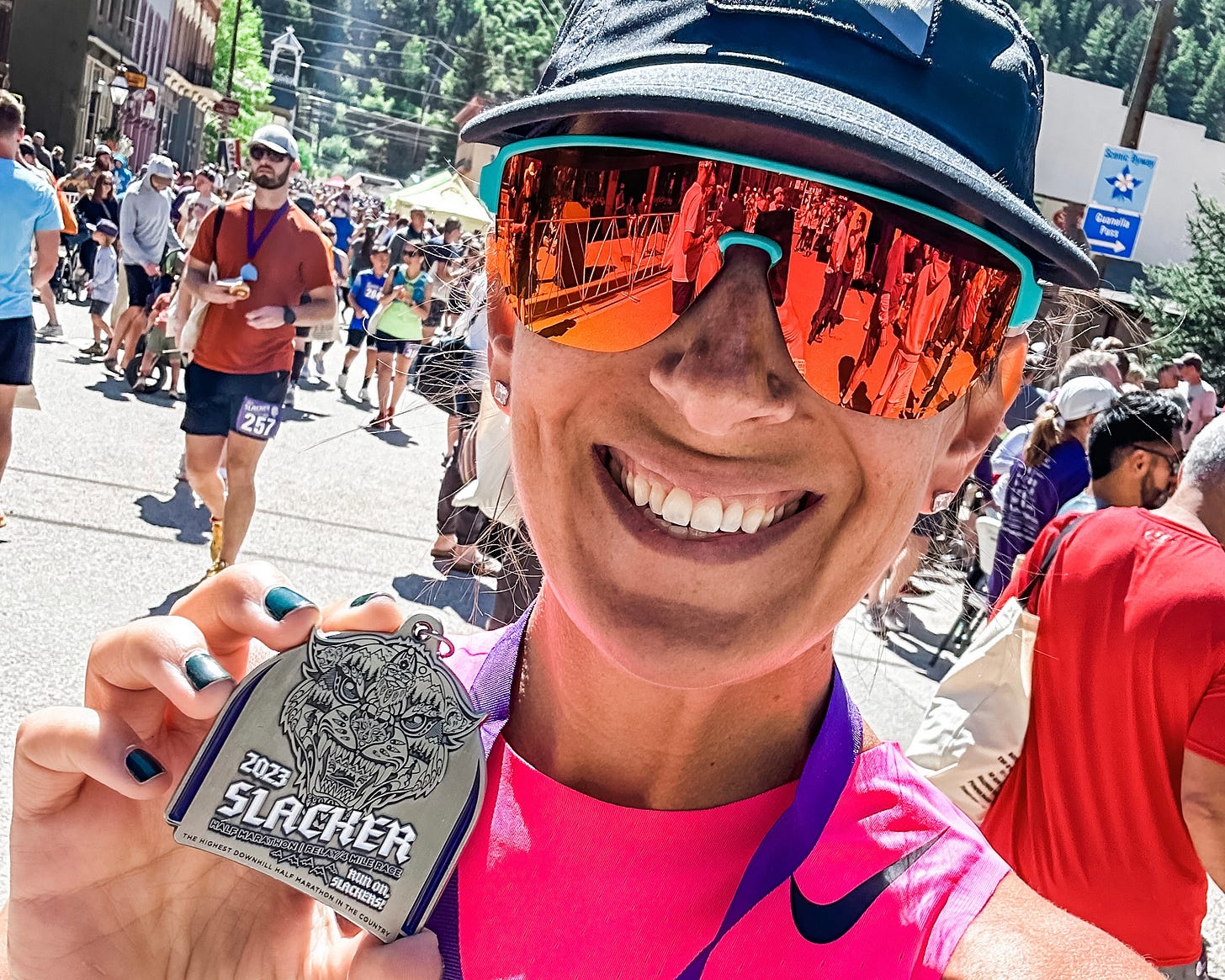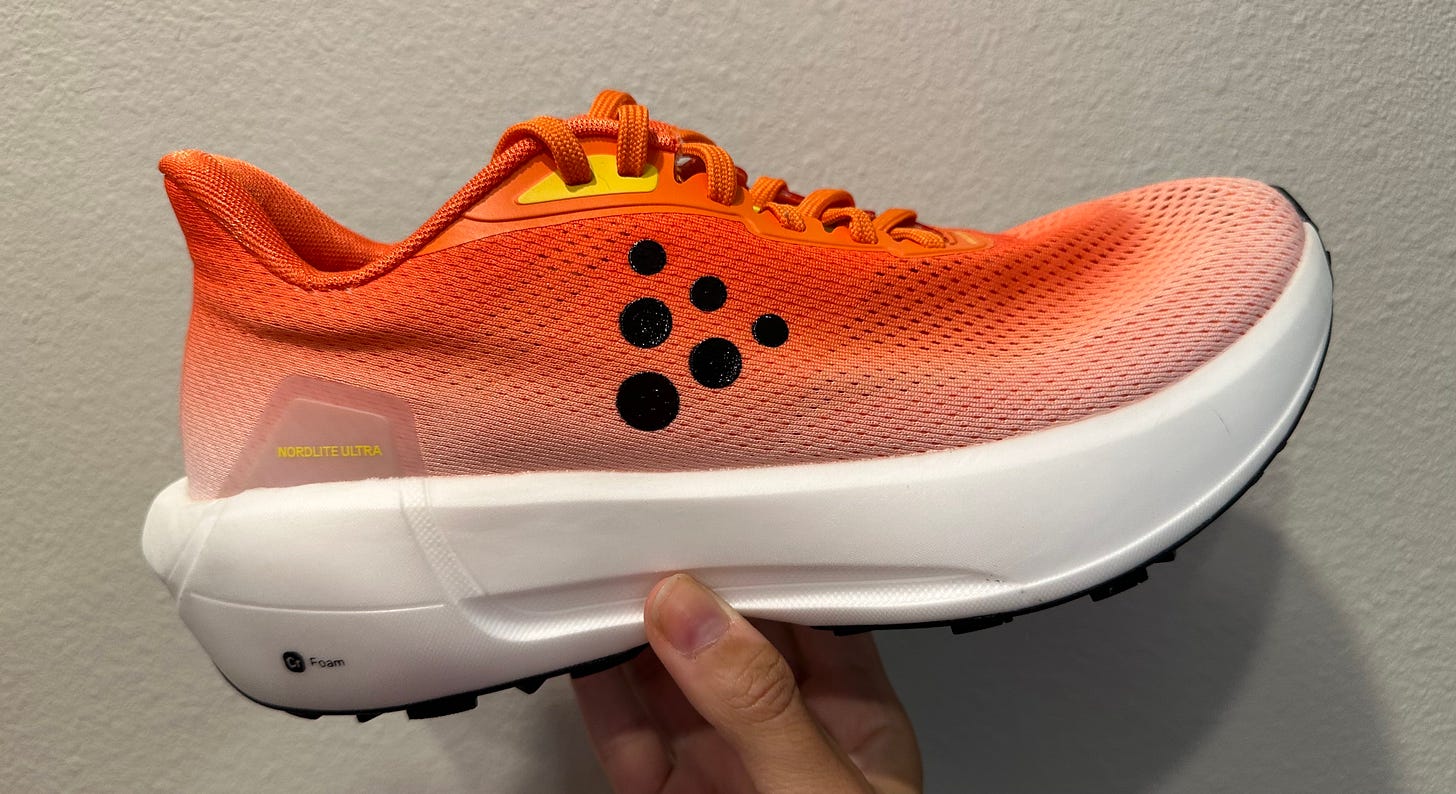Slacker Half Marathon Race Recap
A downhill half should be easy, right?
Well, sometimes a race just doesn’t go as planned. Even though I didn’t *specifically* train for the Slacker Half Marathon, I thought my post-marathon/post-30K fitness was at a place where a PR was totally within reach.
And it might have been—if my hand hadn’t been mauled by a cat (not mine!) the week before the race, sending me to urgent care and putting me on a 10-day course of antibiotics. The nonstop throbbing in my hand was one issue (I couldn’t even put weight on it for the first few days), but the side effects from the meds—nausea, skin sensitive to sunlight, a sore throat, joint and muscle pain, and chest pain—really added insult to injury. Exactly the condition you want to be in for racing!!!
Because of course this sent me down a rabbit hole of Google diagnosing, here’s a couple things to know about how antibiotics can affect running performance: Antibiotics (and an infection on its own) may speed up your heart rate, which can make paces that feel easy on a good day feel harder than they should. Meanwhile, increased sun sensitivity makes it harder for your body to cool itself down, which can lead to heat-related health concerns (with sunburn on the milder end of the spectrum and heat exhaustion, heat stress, and heat stroke on the other).
In fact, a 10-day course of antibiotics decreased aerobic performance by 21 percent in a recent study published in Behavioural Processes; the researchers said by killing essential gut bacteria, antibiotics ravage athletes’ motivation and endurance (the study was done in mice, but, anecdotally, I can relate).
Anyway, back to the race: The Slacker Half Marathon is one of my favorite halves; this was my third year running it! It’s a pretty small local-ish race that runs from the Loveland Ski Basin (starting elevation: 10,800 feet) and finishes in Georgetown (around 8,400 feet). It’s kind of like trail running minus, you know, the trail—my preferred style of trail running, TBH. While the first mile can be a muddy mess, you spend the rest of the race on a paved bike path lined with pine trees and aspens. Every so often, the trees open up to grant you panoramic views of the still snow-capped Rocky Mountains. It’s quiet and peaceful (even when you’re running alongside 1-70 for a brief moment around mile 10) and you end in this quaint, Victorian-esque downtown.
You’d think nearly 3,000 feet of descent would make this an “easy” race, but you’d be wrong. While the course is net downhill, there are enough rolling hills—plus one especially murderous hill just before mile six; it’s probably only 30 feet of elevation gain, but that feels like Everest when you’re still at 9,000’ and you’ve been hurling yourself downhill for over an hour—to make holding your pace feel like work.
That’s kind of what I love about this race: Every year, I think that gravity advantage is going to propel me towards an easy PR, and every year I get my ass kicked by the elevation and the sheer steepness of the course. It’s humbling, in a good way. (And I have a bone to pick with anyone who says “downhill PRs don’t count,” because I easily ran faster on a hilly course earlier this year than I did this weekend!)
I held on to my goal pace for about five miles, but stomach issues and overheating (I blame the meds) forced me to slow down after that. I couldn’t even take advantage of the super sharp descent into town around mile 11, because by that point my quads were starting to seize. Overall, it didn’t feel great, but it wasn’t a total sufferfest—mostly because I had a relentlessly upbeat friend running with me who quickly went from pacing me to just helping me make it to the finish.
Am I happy about how it went? Not really. But what are you going to do? This was a good reminder that a) you can’t always control how race day goes and b) listening to your body is super important. This one race—influenced by things outside of my control—does not reflect where I’m at as a runner. In the end, I had a nice long run in the mountains with a friend, and I’ll put that fitness to use in the next race.
I’ll be back, Slacker. For now, onward towards marathon training!
the rundown
Craft Nordlite Ultra
I am constantly searching for a max cushion trail shoe that feels as good as my road shoes. This Craft shoe is close. It’s actually more of a road-to-trail shoe, so I wouldn’t put it to the test on any really gnarly terrain, but I really liked how it felt underfoot on both pavement and gravel. The midsole is a new nitrogen-infused supercritical EVA foam from the brand, with up to 40 millimeters of foam under the heel and 34 under the forefoot. It’s not as soft as I’d prefer, but it felt lightweight and responsive, with enough grip when I needed it.
Resistance Training for Mental Health
Keeping on my exercise and depression beat… A June 2023 meta-analysis published in Frontiers in Psychiatry found that, of 58 interventions, 30 to 60 minutes of resistance exercise done three to four times a week was the most effective type of training to improve depression and anxiety in young individuals. Do I still count as a young individual? Not sure, but this was definitely a great reminder that I really need to start strength training again.
Bandit Running Stamina 5” Compression Shorts
People had mixed reviews (mostly re: quality) on Bandit’s first running shorts, so I was super happy with how these handled race day. Not only are they my preferred length (not too long, not too short!), I didn’t have to pull down the hems—which have gripper tape at the front and back—once during the entire 13 miles. I could have used a little more compression overall (although I wouldn’t size down); that’s why I used the side pockets, which are big enough for a phone, for gels instead. But these will be going into regular rotation for long runs.
Colorado Investigation Finds Body Composition Testing Harmed “Significant Number” of Athletes
Back in 2022, the University of Colorado started investigating allegations pertaining to body composition analysis, training methods, and overall culture in its cross-country and track and field programs. Runner’s World’s Cindy Kuzma summarized the findings of the report—which basically concluded that the programs “negatively impacted a significant number of student-athletes”—and this Fast Women newsletter broke things down even further, highlighting some comments that are so terrible, I don’t think CU really needed an 82-page report to determine that athletes were harmed by this kind of toxic culture.






Strength training having that kind of effect on depression and anxiety is really intriguing especially considering how awkward gym culture can be (ie introducing more insecurities).